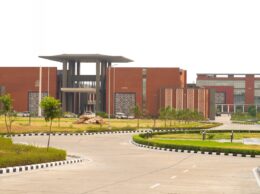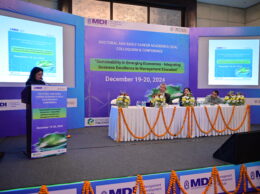MANDI : Indian Institute of Technology Mandi Researcher has made significant advances in understanding how animals navigate back home after foraging, even when confronted with unexpected detours. Using small, programmable robots, the researcher explored the complexities of homing behavior within a controlled environment.
The ability to return home after activities like migration or foraging is crucial for many animals. Homing pigeons, for example, are renowned for their ability to deliver messages over long distances due to their exceptional navigation skills. Similarly, sea turtles, salmon, and monarch butterflies undertake long journeys to return to their birthplaces. This homing behavior, common in nature, has long intrigued scientists.
Different species use various strategies to achieve homing. Some rely on path integration, calculating their return based on the distance traveled and direction, while others depend on environmental cues such as smells, landmarks, star positions, or the Earth’s magnetic field. Despite these varied methods, homing is typically a highly efficient process. However, the influence of random factors, or “noise,” on animal navigation remains an area of ongoing research.
The research team investigated these patterns using small robots designed to mimic animal behavior. These robots, approximately 7.5 cm in diameter, are equipped with sensors to detect objects and light, enabling them to locate a “home” marked by the brightest light source. The robots navigate using independently controlled wheels and adjust their paths based on light intensity, similar to certain animals.
The researcher found that beyond an optimal level of randomness, the duration of homing remains unaffected. Computer simulations further supported these findings, revealing that occasional ‘resets,’ where the robots reoriented directly toward home, enhanced their ability to correct their paths.
Dr. Harsh Soni, Assistant Professor, School of Physical Sciences, IIT Mandi, highlighted the broader implications of this research. He said, “These findings could inform the development of better navigation systems for autonomous vehicles and improve search and rescue missions. Additionally, the study offers valuable insights into cellular dynamics, where similar processes might be at play,”
The study’s findings have been published in the journal PRX LIFE. The theoretical and numerical aspects of the research were conducted by Dr. Harsh Soni from IIT Mandi, along with Dr. Arnab Pal and Mr. Arup Biswas from The Institute of Mathematical Sciences, Chennai. The experimental work was led by Dr. Nitin Kumar and Mr. Somnath Paramanich from IIT Bombay.
The research provides new perspectives on the physics of homing and opens avenues for further exploration in both biological and technological contexts.









